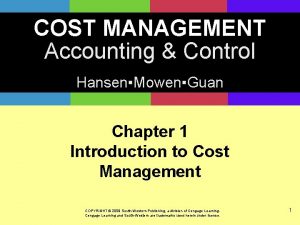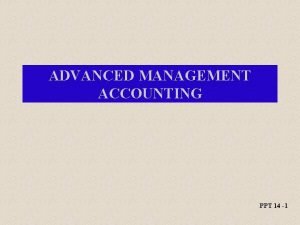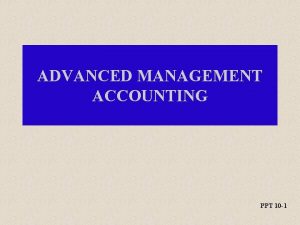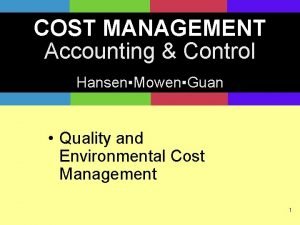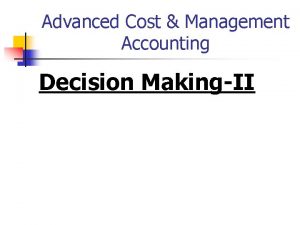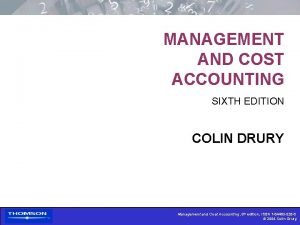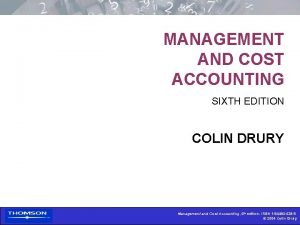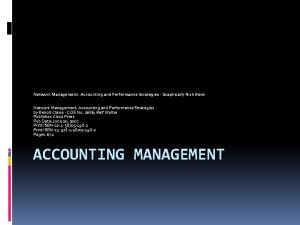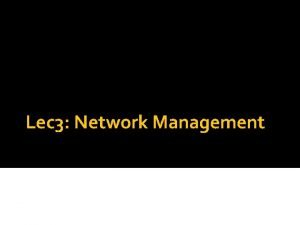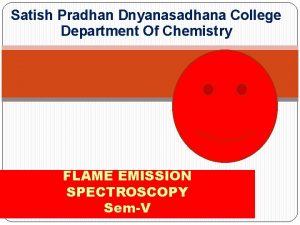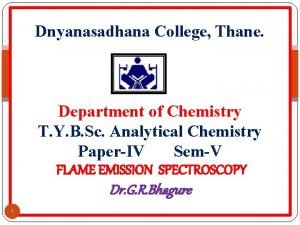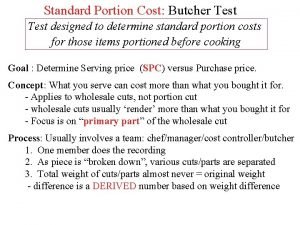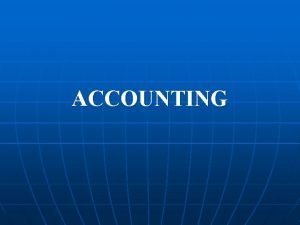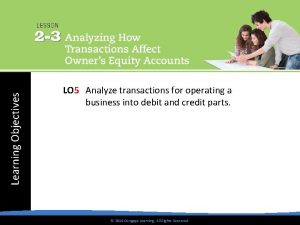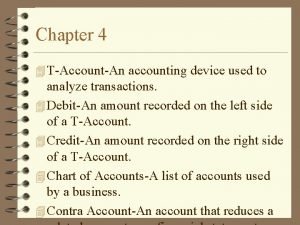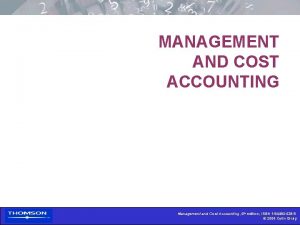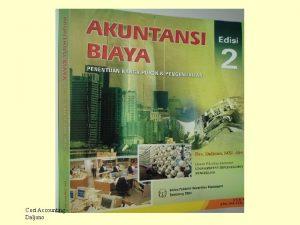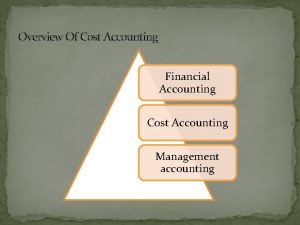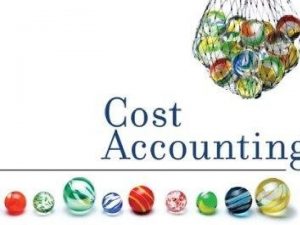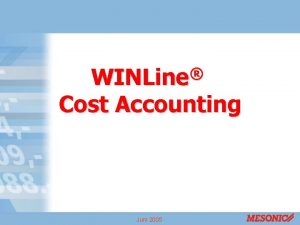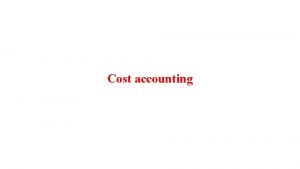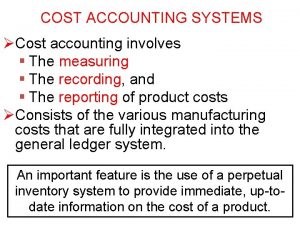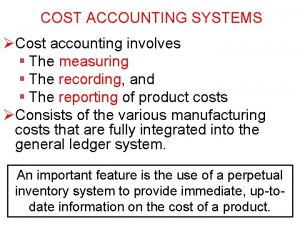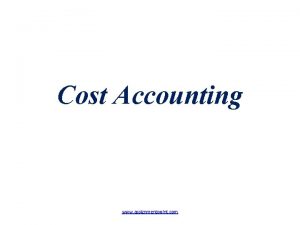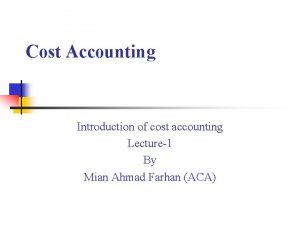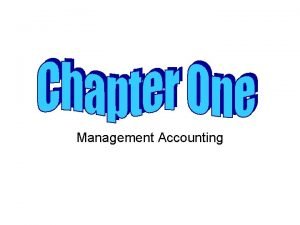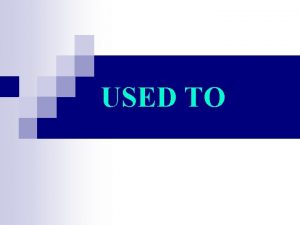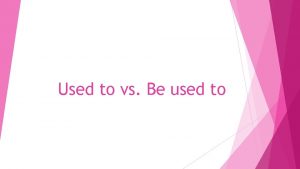Cost Accounting Terminoligies Used In Cost Management Accounting





















- Slides: 21

Cost Accounting Terminoligies Used In Cost & Management Accounting Lecture-2 Mian Ahamd Farhan (ACA)

Review Of Last Lecture In last lecture we discussed Ø Ø Branches of accounting Cost Classification Ø Ø Ø Direct material Direct Labor Other direct production cost Factory overhead Cost Behaviour Ø Ø Ø Fixed cost Variable cost Semi variable cost

Important terms Ø Ø Ø Cost unit Cost center Revenue center Profit center Opportunity cost Investment center Relevant cost Irrelevant cost Sunk cost Product cost Period cost

Important terms Ø Ø Ø Historical cost Standard cost Implicit cost Explicit cost Differential cost Cost accumulation

Cost unit It is a cost of a product or services in relation to which the cost is ascertained, in simple words the cost of producing the units. Example • Ball point for a Ball point manufacturing concern. • Bottle for Beverage producing concern. • Fan for a Fan manufacturing concern.

Cost centre is a production or service location where costs are incurred and may be attributed to cost units. Examples • Workshop in a manufacturing concern • Auto service department • Electrical service department • Packaging department • Janitorial service department

Revenue Center It is part of the entity that earns sales revenue. Its manager is responsible for the revenue earned not for the cost of operations. Examples: • Sales department • Factory outlet

Profit Center Profit centre is a section of an organization where the manager responsible for producing profit by utilizing resources assigned by the organization Examples: • A branch • A division

Opportunity Cost Opportunity cost is the value of a benefit sacrificed in favor of alternate decision. Example Building already let out at a rent of Rs. 10, 000 that can be utilized at the palace of business. Rs 10, 000 is opportunity cost for the business.

Investment Center An investment centre is a segment which is a profit centre where the manager has a responsibility for making capital investment decision. Examples: • A branch • A division

Relevant Cost Relevant cost is that changes with a change in decision. These are future costs that affect the current decision. Examples • Variable cost • Fixed cost which changes with in an alternatives • Opportunity cost

Irrelevant Cost Irrelevant costs are the costs that would not effect the current decision. Examples: • Building Rent • Machine Depreciation

Sunk Cost Sunk cost is the cost of resource already required that cannot be changed with the change in decision. Examples: • Research Cost • Architect consultation fee

Product Cost Product cost is a cost that is incurred in producing goods and services. Example Direct material, direct labor and factory overhead

Period Cost The cost are not related to production and are matched against on a time period basis are period cost Example Selling and administrative expenses

Historical cost is an actual cost that is borne at the date of transaction. Example A building was purchased for Rs 400, 000, it is historical cost of building.

Standard Cost Standard cost is a Predetermine cost of the units. Example Budgeted cost = Rs 400 Budgeted hours = 10 hours Standard cost per hour is Rs. 40

Implicit Cost Implicit cost is an opportunity cost. Example • Uses its own capital • Uses its owner's time and/or financial resources

Explicit cost The actual cost incurred is an explicit cost. Example • Wage • Rent • Materials

Differential Cost or Incremental cost It is the difference of the costs of two levels. Example Cost at producing 1, 000 units is 15, 000 Cost at producing 3, 000 units is 60, 000 Difference between differential cost and marginal cost

Cost Accumulation n Cost accumulation are the various ways in which the information in a set of cost accounts may be aggregated to produce report. Cost Accumulation Process Costing It is a method of cost accounting applied to production carried out by a series of chemical or operational stages or processes. Job Order Costing Generally, it is the allocation of all time, material and expenses to an individual project or job
 Cost and management accounting chapter 1
Cost and management accounting chapter 1 Introduction to cost accounting ppt
Introduction to cost accounting ppt Decentralization and transfer pricing ppt
Decentralization and transfer pricing ppt Cost management accounting and control
Cost management accounting and control Limitations of responsibility accounting ppt
Limitations of responsibility accounting ppt Relevant cost in management accounting
Relevant cost in management accounting Drury management and cost accounting
Drury management and cost accounting Drury c management and cost accounting
Drury c management and cost accounting Cost management principles
Cost management principles Accounting management in network management
Accounting management in network management Managing entity network management
Managing entity network management Accounting management in network management
Accounting management in network management In a premix burner used in fes the fuel used is
In a premix burner used in fes the fuel used is In a premix burner used in fes the fuel used is
In a premix burner used in fes the fuel used is Pyramid levels of management
Pyramid levels of management Management pyramid
Management pyramid Top level management
Top level management What is butcher test
What is butcher test An accounting device used to analyze transaction
An accounting device used to analyze transaction Going concern principle example in real life
Going concern principle example in real life 8. an accounting device used to analyze transactions.
8. an accounting device used to analyze transactions. 4. an accounting device used to analyze transactions.
4. an accounting device used to analyze transactions.
